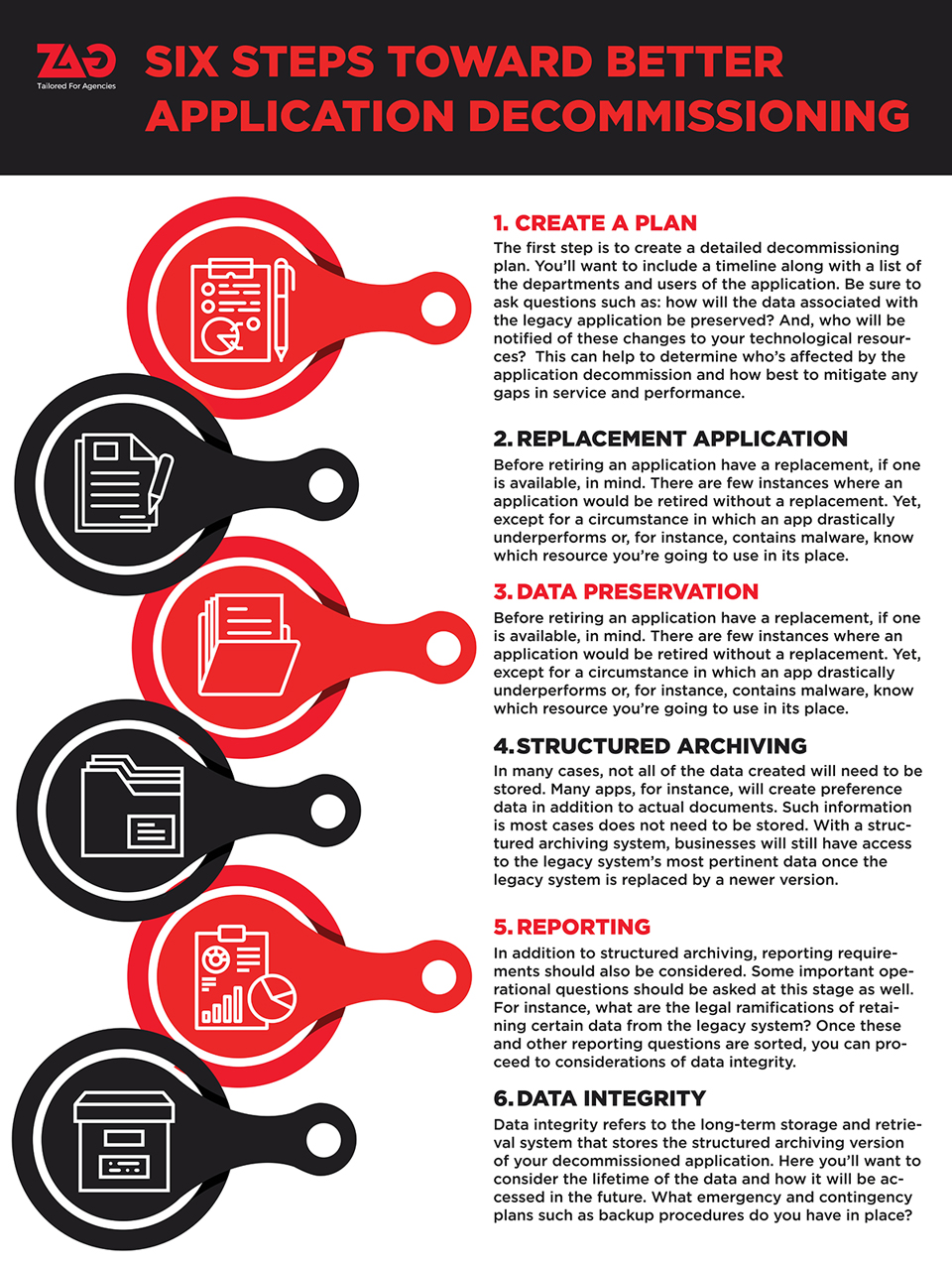
Six Steps Toward Better Application Decommissioning
Application decommissioning is a process that every business will at one point have to go through. Once an existing application has been outmoded by comprehensive upgrades or other important changes to the IT environment, a company will need to retire such an application.
Businesses such as ad agencies, if not frightened into inactivity by such a prospect, will jump into the process unprepared leaving open the possibility for all sorts of issues to arise. So, how can your business decommission applications the right way? Here are six steps.
- Replacement application. Before retiring an application have a replacement, if one is available, in mind. There are few instances where an application would be retired without a replacement. Yet, except for a circumstance in which an app drastically underperforms or, for instance, contains malware, know which resource you’re going to use in its place.
- Create a plan. The first step is to create a detailed decommissioning plan. You’ll want to include a timeline along with a list of the departments and users of the application. Be sure to ask questions such as: how will the data associated with the legacy application be preserved? And, who will be notified of these changes to your technological resources?[1] This can help to determine who’s affected by the application decommission and how best to mitigate any gaps in service and performance.
- Data preservation. Just because you’re retiring an old application doesn’t mean that you’ll be throwing out all of the invaluable data associated with the legacy app. Indeed, you’ll want to decide which parts of the data generated during the course of the application’s lifespan are worth retaining. In order to do so, this requires a structured archiving plan.
- Structured archiving. In many cases, not all of the data created will need to be stored. Many apps, for instance, will create preference data in addition to actual documents. Such information is most cases does not need to be stored. With a structured archiving system, businesses will still have access to the legacy system’s most pertinent data once the legacy system is replaced by a newer version.
- In addition to structured archiving, reporting requirements should also be considered. Some important operational questions should be asked at this stage as well. For instance, what are the legal ramifications of retaining certain data from the legacy system? Once these and other reporting questions are sorted, you can proceed to considerations of data integrity.
- Data integrity. Data integrity refers to the long-term storage and retrieval system that stores the structured archiving version of your decommissioned application. Here you’ll want to consider the lifetime of the data and how it will be accessed in the future. What emergency and contingency plans such as backup procedures do you have in place?
